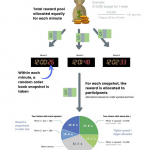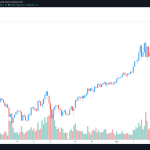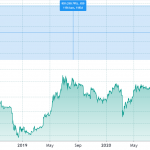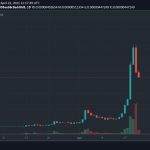To say the engineering that goes into the platform design for an offshore wind farm is “complicated” would be laughable at best.
“Complicated’ barely scratches the surface of the hundreds of hours of work that goes into designing a structure to support a tower that will stand some 100-200 meters high in the ocean for 20+ years, be subjected to enormous wave and wind loads over those two and half decades and oh, not to mention, generate electricity all the while.
At the recent Offshore Wind Executive Summit, engineers packed into a session that explored Adapting Oil and Gas Design Technology to Offshore Wind Platforms. Phil Christensen, Vice President, Analytical Modeling with Bentley was a presenter at the session and offered five of the most important takeaways for engineers.
Watch China
The country is doubling down on all renewables, according to Christensen, and offshore wind is an important piece of that puzzle. China is using its offshore oil and gas expertise to help build up the offshore wind industry.
“They had a thriving offshore oil and gas sector in Bohai Bay and other places and they have been building on that,” he said. Adding that Bentley has “employed a couple of people over there who have come from companies that started out in oil and gas and have transitioned into offshore wind.”
Drones Will Play a Key Role In Operations and Maintenance (O&M)
At least 25 percent of the total expenditure of an offshore wind farm goes into O&M – after all, these structures must deliver electricity for more than two decades so upkeep is extrememly important. Christensen said that engineers need to know that drones will take a leading role in delivering data for asset maintenance in the future.
“People are aware of drones in some way but they were not really aware of the way you can turn the pictures [captured by drones] into 3D models and the way that those 3D models can become a gateway to other information sources,” he explained.
Further down the road, Christensen said we’ll see drones operating on their own.
“I think the endgame with be autonomous drones in a hanger in the field,” he said, adding that he thinks a model like that could be in place in as few as three years. More on that topic here.
Cloud-computing Can Drastically Cut Compute Time and Increase Confidence
During a presentation by Keystone Engineering’s Zach Finucane, General Manager, Offshore Renewables and the man responsible for designing the platforms for the Block Island Wind Farm, he said that the analysis was performed by four or five in-house computers running for a full week. Christensen said the cloud computing can cut that time to just a few hours, which means that engineers can run more analyses.
“They can run more design alternatives and run the analysis more thoroughly [such as] consider more load combinations and consider more alternatives,” he said. “And it gives you a high degree of confidence that you are meeting the regulatory requirements with respect to compliance to the design code.”
This is potentially transformative technology, said Christensen, who added that costs run in the order of five to $10 per compute hour.
“If an analysis might cost you a few hundred dollars and you can take the time from a week down to some hours, that’s probably worth paying,” he said.
Government Research Lab Has Been Extremely Helpful in Furthering This Industry
Christensen referenced open-source FAST software developed by the National Renewable Energy Lab (NREL) as playing a key role in wind farm design and analysis software. According to NREL:
FAST is NREL’s primary CAE [computer-aided engineering] tool for simulating the coupled dynamic response of wind turbines. FAST joins aerodynamics models, hydrodynamics models for offshore structures, control and electrical system (servo) dynamics models, and structural (elastic) dynamics models to enable coupled nonlinear aero-hydro-servo-elastic simulation in the time domain.
Because the software is open-source, Christensen said Bentley was able to quickly and easily incorporate it into its Offshore Structural Analysis and Design (SACS) software. He was complimentary of the U.S. government.
“Often there is very good research done but the lead time from government taxpayer dollar spending and the actual benefit to the industry can sometimes be quite long,” he said.
“So, this is an example where that is being compressed.”
Figure credit: Bentley
Training Is Available Now
At the conclusion of the session, Christensen said he had lots of younger engineers approach him to ask questions about how they could transfer their skills from offshore oil and gas to offshore wind.
“The issue was the different kinds of loading that the turbines apply and the fact that the loading is a lot more complex,” he said, referencing a debate that took place during the session.
“It is very technically challenging and as you can tell from that conversation the answers are not always obvious,” he added.
Bentley offers training for engineers interested in learning more. Christensen said there are locations for training in Asia, North America and Europe.
“The training helps people to learn about the different kinds of loading and the different kinds of analyses that need to be done to consider the very large number of loading conditions that result from the fact that the wind and the wave can come from different directions,” he said, adding “and then the aeromechanical load from the turbine at the top of the mast plays a different effect as well…It’s heavy-duty stuff.”
The Offshore Wind Executive Summit will return to Houston in September 2018.
Lead image credit: PennWell














